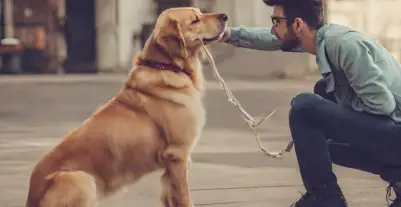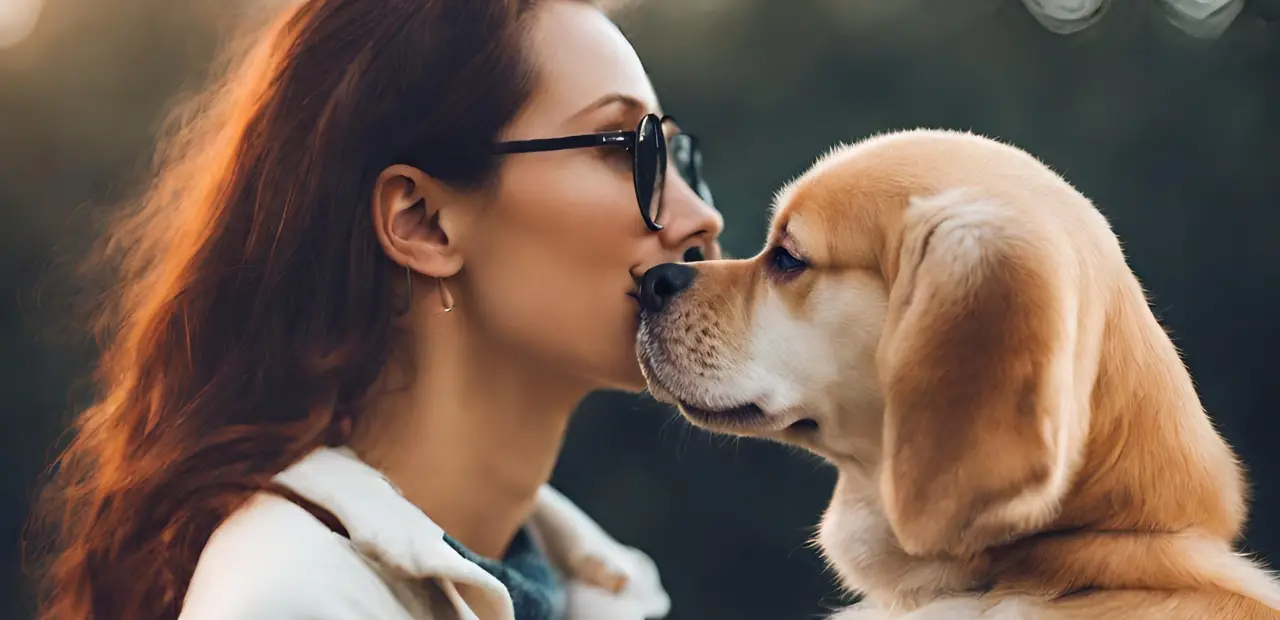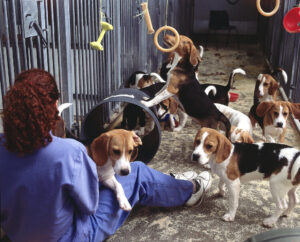Dogs are known for their unwavering loyalty and affection towards humans, but can they experience strange attractions? This intriguing question has puzzled pet owners and researchers alike. In this article, we delve into the fascinating world of canine behavior and explore whether dogs can develop peculiar attractions to humans. From scientific studies to real-life anecdotes, join us on this captivating journey to uncover the truth about these unusual canine-human connections.
Understanding Canine Behavior
Our fluffy friends are far more complex than they appear. Looking beyond their playful demeanor, we realize each wagging tail or excited bark tells a tale. From defensive aggression to clear signs of affection, dogs speak to us through their behaviors. And as any dog devotee would agree, trying to figure out what’s going on in that furry little head can be quite the adventure. Each quirky behavior presents a puzzle, making conditions like our current exploration, particularly interesting. So, join us as we delve into the exciting realm of canine behavior to unravel the mysteries and lay the foundation for understanding this unique attraction dogs could have toward humans.
Instinctual Bonding with Humans
When it comes to our four-legged friends, instinct plays a huge part in their interactions with us. The bond between dogs and humans is deeply rooted in history and evolved over thousands of years. We domesticated dogs primarily for working purposes – be it for hunting, guarding, or herding.
Dogs have been living side by side with humans for an estimated 15,000 to 30,000 years. This close, mutual relationship influenced their behavior greatly. Over time, dogs have developed a unique ability to understand and communicate with humans. They’ve learnt to interpret our emotions, gestures and even facial expressions – skills they don’t usually use when interacting with other dogs.
“Dogs have been uniquely attuned to human behaviour. So in some ways, they’re already better wired to understand us than even our closest primate relatives”, says renowned anthropologist Dr. Brian Hare.
This instinctual bonding is the foundation for the more complex emotional bonds that form between dogs and humans. So, if you ever wondered why your furry buddy seems unusually attached at times, it’s worth considering this inherent need to connect with humans driven by their instinct.
[Why dogs are so friendly explained](https://news.duke.edu/2017/07/why-dogs-are-so-friendly-explained)
Understanding Attraction in Dogs
Navigating the world of canine attraction can be a complex task. Unlike humans, dogs don’t fall in love in the romantic sense. Instead, their “attractions” are driven more by their instincts and social dynamics.
Experts suggest that dogs form preferences based on their experiences. They may become more drawn to certain individuals due to positive interactions, mutual trust, or simple familiarity.
In the dog’s world, attraction is usually non-romantic and often transient, based on factors like pack hierarchy or resource accessibility. It’s crucial to remember that while our furry friends might demonstrate a strong preference for certain individuals, their motivations are far removed from what we typically understand as ‘attraction’.

Obsessive Behaviors in Dogs
Don’t we all have habits that others might find slightly odd? Just like us, dogs also display behaviors which may seem out of the ordinary. They finish their meals in a certain order, they whimper when they hear a specific sound, or they could obsessively chase their tail. These curious actions are often chalked off as typical canine behavior. But sometimes, what appears to be a harmless habit could be an indication of an obsessive behavior. So, let’s shake off our assumptions and explore the intriguing aspect of obsessive behaviors in dogs.
Common Obsessive Behaviors
Dogs can sometimes express their emotions in the most unexpected ways. This includes a myriad of strange or obsessive behaviors like constant tail chasing, excessive licking or compulsive barking. These behaviors may seem odd to us, but for dogs, they can be a way to cope with boredom, anxiety or other uncomfortable feelings.
Some dogs might develop an unusual fixation with certain objects, parts of their body, or even specific individuals. This might reveal itself through persistent staring, non-stop following around, or incessant nibbling. While these behaviors might come off as charming quirks at first, if left unchecked they could turn into a serious problem, potentially taking a toll on their mental and physical health. To properly care for our four-legged friends, it’s essential to understand these behaviors and seek professional help when they persist.
Causes and Triggers of Obsessive Behaviors
Dogs express their feelings differently than we do. Sometimes, these expressions can be quite extreme. Obsessive behaviors in dogs might be considered one of these extreme expressions. But what triggers such behavior?
Certain stimuli in a dog’s environment can trigger obsessive behaviors. These triggers vary from one canine to another. Common triggers include loneliness, boredom, lack of physical activity, or unresolved anxiety. In some cases, the presence of particular humans or objects could inspire these behaviors.
No two dogs are the same, so what causes one dog to behave obsessively might not have the same effect on another. It’s crucial to observe your pet’s actions and environment to understand what could be causing their unusual behavior.
Strange Attraction in Dogs
In some instances, dogs may exhibit behaviors that appear peculiar to their human companions. These can signal an unusual form of attraction, where the dog seems oddly drawn to a particular individual. Are such odd behaviors a sign of a deeper emotional connection, or could there be another explanation? In this section, we aim to delve deeper into this phenomenon and make sense of these strange canine-human connections.
Defining Strange Attraction
When we explore the term strange attraction, we’re not referring to something out of a science fiction story. Strange attraction in this context means an unusual or unexpected fascination that a dog may develop for a particular human.
It’s not the typical love or affection dogs usually show for their human family members. It’s something more unusual or unexpected – something that doesn’t always align with our understanding of normal dog behavior. This could include a range of behaviors like excessive following, excessive staring, and unusual interactions that seem out of character for the dog.
Understanding this concept is the first step towards discussing the possible explanations behind it.
Unusual Bonding Behaviors
Ever noticed your dog behaving in an oddly endearing way around you or other humans? Such actions might make you wonder if they’ve developed a strange attraction. Various peculiar habits, such as incessant licking, excessive whining, or persistent following, often signify these unusual bonds.
Dogs can form a preference for certain individuals based on their scent, the timbre of their voice, or simply because they feel more comfortable around them. They might also behave unusually around people who feed them, play with them, or give them the most attention.
Exploring Possible Explanations
Various factors can spark an unusual fascination in dogs towards their human companions. Just like us, every dog is an individual with unique experiences and traits. While there isn’t a one-size-fits-all answer, we can explore a few potential explanations.
Perhaps your furry friend has a unique affinity for a certain scent. Physiologically, dogs’ sense of smell is far superior to ours. Maybe it’s your perfume, your body lotion, or a smell associated with your activities (e.g., cooking, gardening).
Emotional resonance could be another factor. Dogs are incredibly empathetic creatures. They have a remarkable ability to pick up on subtle emotional cues. If you’ve been going through a trying time, your pooch might sense your emotional state and respond in kind.
The dog might also be responding to the way you treat them. Dogs are not unlike humans in their crave for attention, affection, and validation. If you’ve been providing a surplus of these, well, who wouldn’t become strangely attracted?
Remember, these are all just possible explanations. Every dog’s behavior is influenced by various factors, including their individual personality, learning history, and environment. “One man’s meat is another man’s poison,” as the old saying goes. What one dog might find attractive, another might not even notice. Our canine companions are complicated, but that’s what makes them so fascinating, right?
Human Impact on Canine Behavior
Dog behavior isn’t solely dictated by their instincts. In fact, human influence plays a significant part in shaping our furry friends’ behaviors. We’ll explore how human actions can encourage certain behaviors, and delve into how socialization and emotional resonance affect the way dogs behave and form attachments.
Human Encouragement and Conditioning
When focusing on canine behavior, we can’t overlook the significant impact of human encouragement and conditioning. This influence can sometimes be the root of what appears to be a peculiar attraction.
When dogs see a particular behavior rewarded, they’re likely to repeat it. This is known as conditioned behavior. So, if your pooch starts doing something out of the ordinary and gets loads of attention, they’re likely to keep doing it! For instance, let’s say your dog spontaneously starts following you into the bathroom. Initially, you may find it amusing and give your pet some extra pats or treats. Well, in your dog’s mind, that’s a reward! It won’t take long before this becomes a disciplined habit, gradually cultivating into a type of ‘strange attraction’.
Remember, dogs are intuitive creatures. A lot of their behaviors may seem strange to us, but to them, it’s just a way of gaining our love and attention. In these cases, it’s safe to say that we, the humans, might be responsible for fostering these unique attractions!
Socialization and Emotional Resonance
Socialization is key in understanding the interaction between dogs and humans. From an early age, puppies are exposed to various people, animals, and environments. This exposure plays a significant role in how they perceive and react to different stimuli as they grow.
An interesting aspect of this interaction is emotional resonance. This concept refers to how dogs can pick up and respond to human emotions. In other words, your furry friend might just be mirroring your joy, sadness, or even stress. This phenomenon explains why dogs often seem in tune with their owner’s emotions.
As pet owners, it’s crucial to remember that our demeanors and emotional states can affect our dogs. By managing our feelings and behaviors, we can create a positive environment for our dogs to thrive. This way, we can foster a healthy bond free from “strange attractions.”
Bonding Between Dogs and Humans
The bond between humans and their canine companions is storied and profound, often transcending the realm of standard pet-owner relationships. This kind of connection, characterized by mutual trust, affection, and an understanding that’s uniquely deep, is a wonder to behold. But how does this bond form? And what role might an out-of-the-ordinary attraction play in this inter-species friendship? Dive into the details to find out.
Mutual Attraction and Bond Formation
Dogs and humans share a special connection that goes way back. It’s a bond that transcends mere ownership or dominance. This bond is about reciprocity, mutual respect, and shared joy.
The formation of this bond is accompanied by mutual attraction. You might wonder, how does this happen? It’s based on the exchange of positive emotions and actions. When you shower your furry friend with affection, play with them, or feed them, they associate you with joyful experiences. They begin to feel attracted to you, not just for the treats, but for the love and care you provide.
This reciprocity creates a powerful bond. This deep emotional connection can explain the so-called ‘strange attractions’ in dogs. It’s not alien, but an intense form of the same affection they feel for us, intensified perhaps due to their dependence on us for their needs and survival.
The Power of Emotional Connection
The emotional tie that intertwines humans and dogs is nothing short of amazing. In a fascinating scenario, our four-legged friends seem to read our moods, respond to our feelings, and share in our joys and sorrows. They have an uncanny ability to attune to our emotional states, a phenomenon often referred to as emotional resonance.
Scientific studies have confirmed this shared emotional bond. In a research study by Nagasawa and colleagues, dogs and their owners experienced rises in oxytocin levels during mutual gazing, a behavior associated with affection and bonding. This ‘love hormone’, as it’s popularly known, fortifies the emotional ties between humans and dogs, revealing a connection that transcends species barriers.
The emotional bond between humans and dogs can sometimes be expressed in peculiar ways, sparking debate about what we term as ‘strange’ attractions. But, as we navigate this fascinating field, it’s important to remember the unique emotional landscape that shapes canine-human interactions. This powerful connection is not merely a thread of attachment but a canvas of mutual affection, understanding, and deep, genuine love.
Tips for Managing Strange Attractions
When your four-legged friend starts behaving in an unusually attached manner, it’s easy to get puzzled. By delving into this topic, we’re aiming to provide guidance on managing these eccentric behaviors. From understanding and acceptance to positive reinforcement and seeking professional help, we’ll navigate through practical solutions to keep these attractions healthily balanced.
Understanding and Acceptance
In the world of canine behavior, understanding and acceptance play crucial roles. This means acknowledging your dog’s peculiar attraction without judgment and seeking to understand its root cause.
Essentially, it involves empathizing with your dog and recognizing their unique forms of expressing devotion. Interpreting such behavior can be incredibly fascinating and profoundly impact the bond you share with your furry friend. Quotes from renowned animal behaviorists like “The ideal of calm exists in a sitting dog” by Robert Benchley underline the importance of patience and understanding in decoding canine behavior.
Positive Reinforcement Training
Positive reinforcement training is a potent method to manage peculiar attractions your dog may exhibit. It’s a reward-based system, where a dog is rewarded for exhibiting desirable behavior. The reward could be a treat, praise, or a favorite game.
This training method can be quite effective. When dogs associate good things with proper behavior, they’re more likely to repeat those actions. Plus, this method revolves around building a bond of trust, love, and respect which can help navigate unusual attractions.
“Dogs do not care about the fact that their actions are desirable to us; they only care that their actions are profitable to them.” – Dr. Ian Dunbar, a renowned Animal Behaviorist.
So, the next time your dog displays a peculiar liking, guide them towards a proper response through positive reinforcement training. And remember, patience is key when it comes to training. It might take some time before your furry friend learns to manage their unusual attractions.
Source: [Positive Reinforcement in Dog Training](https://www.thesprucepets.com/what-is-positive-reinforcement-in-dog-training-1118270)
Seeking Professional Help
When you notice your furry friend showing distinctively odd behavior towards humans, it may be time to consult a professional. Expert help comes in many ways; you may opt for a licensed veterinarian, an animal behaviorist, or a professional dog trainer.
Professionals in this field are equipped with the right knowledge to interpret your dog’s actions and provide necessary solutions. They may offer counseling or behavior modification programs to manage and even alter your dog’s unusual attraction. Remember, it’s perfectly okay to seek professional help when things get a tad too confusing or overwhelming. After all, we all want what’s best for our lovable canines.
Conclusion
While it may seem bizarre, dogs can indeed develop strange attractions to humans. Whether it’s due to instinct, conditioning, or emotional resonance, these unique connections fascinate us and serve as a testament to the intricate relationship between humans and their canine companions. As responsible pet owners, it is essential to understand and manage such attractions with compassion and expert guidance. So the next time your dog displays unusual behavior towards you or others, remember that it may just be their way of expressing a different kind of love and devotion.








